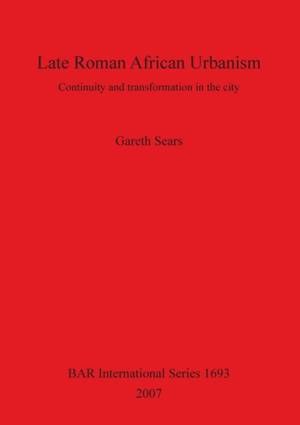
- Afhalen na 1 uur in een winkel met voorraad
- Gratis thuislevering in België vanaf € 30
- Ruim aanbod met 7 miljoen producten
- Afhalen na 1 uur in een winkel met voorraad
- Gratis thuislevering in België vanaf € 30
- Ruim aanbod met 7 miljoen producten
Omschrijving
This book examines the transformations occurring in the cities of Latin North Africa in the Roman Empire in the course of the late third, fourth and early fifth centuries AD. These developments have been assessed through a series of case studies of North African cities using archaeological, epigraphical and literary, source material. The study examines the continued vitality of municipal life in Africa by examining the evidence for the maintenance and construction of judicial, religious, defensive and entertainment structures in the late Roman period. The book also tackles the nature of the Christianisation of the North African cities within the wider urban context. It considers the appropriation of elements of the classical urban heritage for Christian use and the construction of new Christian buildings. It reassesses the nature of the Donatist and Catholic Churches, examines their differing ideologies and indicates how these could impact upon the built environment. The study also considers the effect of the changes in the urban area on the population and movement within the city as well as demonstrating the distinctive nature of late Roman North African urbanism and its setting within an Empire-wide context. The book concludes that North African city-life was generally flourishing in this period but that a set of processes were producing a new, African cityscape.
Specificaties
Betrokkenen
- Auteur(s):
- Uitgeverij:
Inhoud
- Aantal bladzijden:
- 182
- Taal:
- Engels
- Reeks:
- Reeksnummer:
- nr. 1693
Eigenschappen
- Productcode (EAN):
- 9781407301310
- Verschijningsdatum:
- 15/10/2007
- Uitvoering:
- Paperback
- Formaat:
- Trade paperback (VS)
- Afmetingen:
- 210 mm x 297 mm
- Gewicht:
- 598 g

Alleen bij Standaard Boekhandel
Beoordelingen
We publiceren alleen reviews die voldoen aan de voorwaarden voor reviews. Bekijk onze voorwaarden voor reviews.











